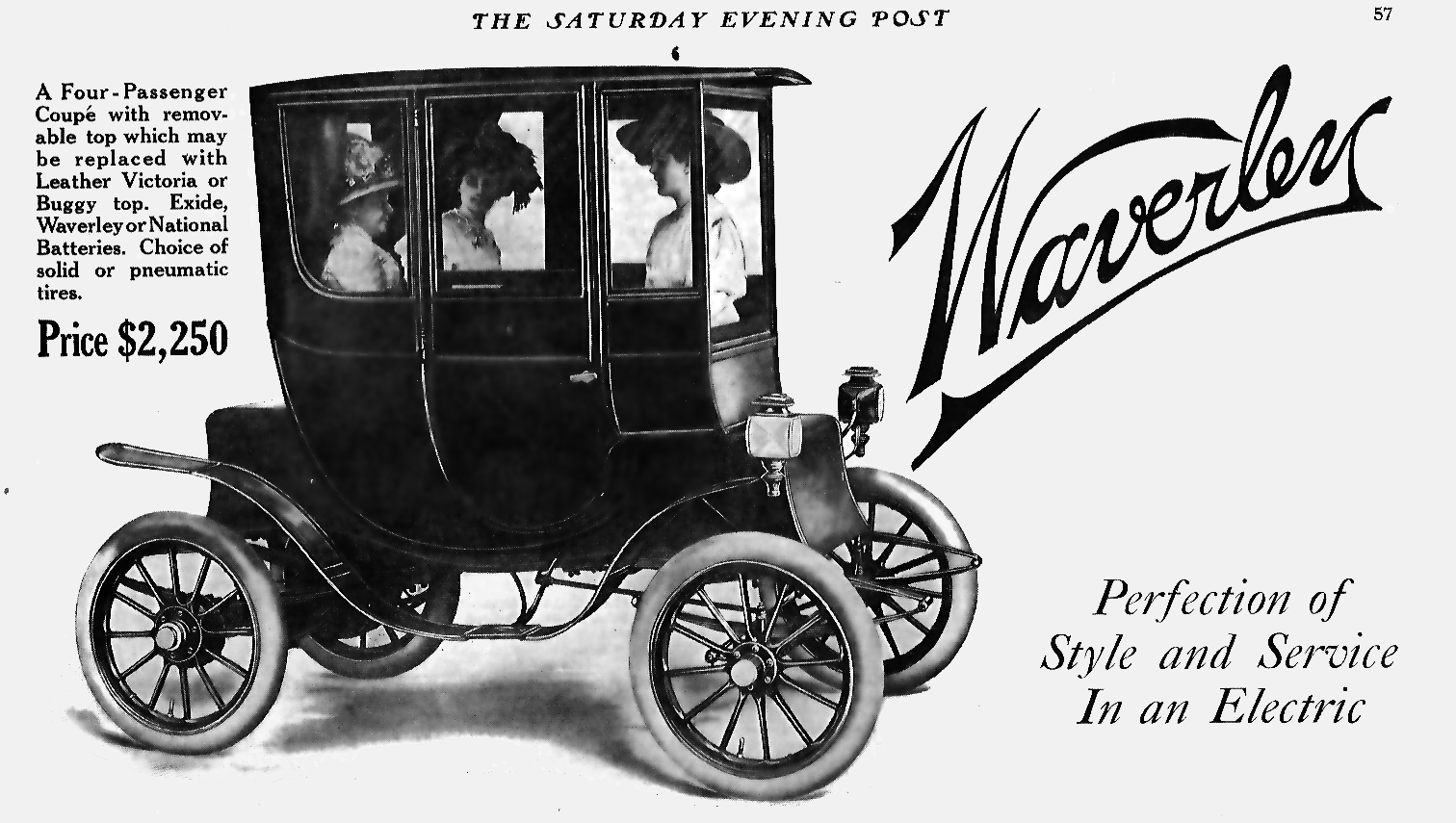100+ Year Old Electric Cars (or execution is everything)
The first electric car was developed in 1830. The first internal combustion car came in the late 1880s, nearly 60 years later. In 1905, there were more than 450,000 cars in the US. The majority of these cars were Electric or Steam powered, with a small number of Gasoline powered cars. Electric cars were prized for their reliability, comfort, and efficiency. The electric car was, essentially, the best vehicle on the market for most uses up through 1920.

Of course, as time wore on, advances in the production of Internal Combustion engines, and advances in manufacturing techniques and assembly lines, meant that the reign of the Electric Car was cut short. The 1912 invention of the Starter Motor was the first of many blows. The dependence of many Electric Car companies on a kind of Lease-Only business model was also a strong contributor to their ultimate demise. The final nail in the coffin was the eventual build out of the modern gasoline distribution system, increasing the range of internal combustion cars well beyond that of their electric counterparts.
And so, for the most part, the electric car was buried from 1920 until the late 00s, and we went down the Internal Combustion road, only realizing 100 years later that we should really have paid more attention to those electric cars. (Heck, with the rising costs of Gasoline in the late 00s, I’m astounded no one suggested going back to Kerosine powered Steam Driven cars.)
I think this can serve as a nice illustration of a logical fallacy that often trips up early stage startups. It doesn’t matter if you have the better product, it doesn’t matter if your product hits the market first. It doesn’t matter if you have rabid fans, that will evangelize you. Disruption comes from unexpected places. In the case of the electric car, it came from:
- an increase in the ease of use of a previously difficult technology (the electric starter.)
- a new business model (both in the form of the mass-production assembly line, and in direct sales, vs lease-only sales. Not to mention Ford’s Planned Obsolescence model, which valued the company’s bottom line over the quality of products.)
- lower initial costs (even though total cost of ownership was higher)
- better understanding of consumer needs (The ability to refuel, and the build out of a gas station network, revolutionized the auto industry.)
Was the Model T the best car of 1920? That’s really going to depend on your criteria. It wasn’t the most reliable (most electric cars were more reliable.) It wasn’t the most fuel efficient (most steam and electric cars were more fuel efficient.) It wasn’t the quietest (electric, again, though later steam cars were also nearly silent in operation.) It wasn’t the easiest to work on. It didn’t have the lowest Total Cost of Ownership.
It was, however, the most well marketed. It was the cheapest to purchase ($325 in 1920.) Its range was bolstered by the increasing prevalence of gas stations, and it started up as quickly as an electric, and much more quickly than a steam powered car. Electric cars were unable to re-fuel at all, and charging was slow. The steam car could make use of refilling stations, and was cheaper to refill, but it was more initially expensive, less generally reliable, more dangerous to operate, and took significantly longer to start up.)
A great product won’t make a company successful. The right business model won’t make a company successful. A cheap product won’t make a company successful. It takes most of these things, and a dozen others, plus a fair amount of luck. Any business is a risk, and sometimes the “right” or the “best” path will take 100 years to catch on.
Chin up, startups. Ideas are worthless, but the good ones catch on eventually.
If you enjoyed this post, please consider signing up for my newsletter. or following me on Mastodon.